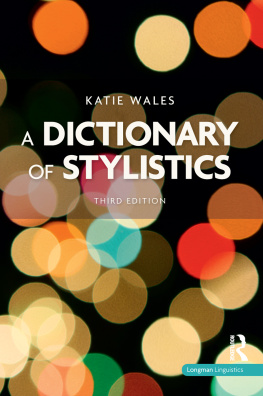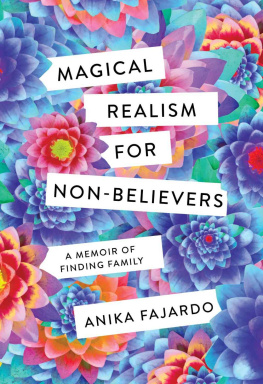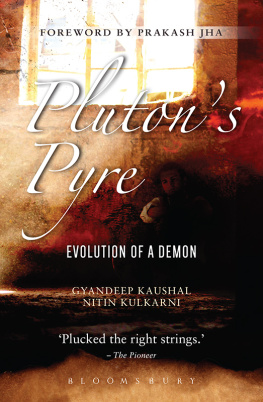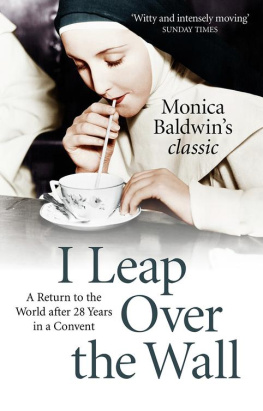Anarchy and Art
Anarchy and Art
From the Paris Commune to the Fall of the Berlin Wall
Allan Antliff

ANARCHY AND ART
Copyright 2007 by Allan Antliff
All rights reserved. No part of this book may be reproduced or used in any form by any meansgraphic, electronic or mechanicalwithout the prior written permission of the publisher, except by a reviewer, who may use brief excerpts in a review, or in the case of photocopying in Canada, a license from Access Copyright.
ARSENAL PULP PRESS
#102-211 East Georgia St.
Vancouver, BC
Canada V6A 1Z6
arsenalpulp.com
The publisher gratefully acknowledges the support of the Canada Council for the Arts and the British Columbia Arts Council for its publishing program, and the Government of Canada through the Book Publishing Industry Development Program and the Government of British Columbia through the Book Publishing Tax Credit Program for its publishing activities.
Efforts have been made to locate copyright holders of source material wherever possible. The publisher welcomes hearing from any copyright holders of material used in this book who have not been contacted.
Text and cover design by Shyla Seller
Cover art: Strike Zone by Richard Mock, 1991
Printed and bound in Canada
Library and Archives Canada Cataloguing in Publication:
Antliff, Allan, 1957
Anarchy and art: from the Paris Commune to the fall of the Berlin Wall / Allan Antliff.
Includes bibliographical references and index.
ISBN 978-1-55152-218-0 (pbk.)
EISBN 978-1-55152-300-2
1. ArtPolitical aspects. 2. Anarchism in art. 3. Art and society. 4. ArtistsPolitical activity. 5. Anarchism. I. Title.
N72.P6A67 2007 701.03 C2007-902269-3
Fight until the unborn lives, and the dying, die!
Bayard Boyesen
CONTENTS
ACKNOWLEDGMENTS
Research for this book was aided by grants from the Social Sciences and Humanities Research Council, the University of Victoria, and the support of the Canada Research Chair program. I am particularly indebted to Wolf Edwards, Patricia Leighten, Mark Antliff, Richard Day, and Robyn Roslak for many invaluable insights. In addition, weekly discussions at the Victoria Anarchist Reading Circle were a constant stimulation. Finally, my thanks goes to Brian Lam, Shyla Seller, Robert Ballantyne, and Bethanne Grabham of Arsenal Pulp Press, who saw this book to completion with grace and lan.
INTRODUCTION
As its title indicates, this book was written in part to call attention to and encourage the development of an emerging field in art history: the study of anarchism in art. Though there are many monographs on artists who have identified as anarchists, to date broader surveys of the relationship between anarchism and art are few and far between. In part, this is because anarchist art has been perceived generally as one facet in a larger projectleftist artwith the result that differences between it and other traditions have often been glossed over or ignored altogether. This book, therefore, is a step toward the foregrounding of art production as it relates to historical, philosophical, social, and political issues from an anarchist perspective.
From European anarchisms beginnings in the nineteenth century, the arts have been an integral part of the movement, as evidenced by Pierre-Joseph Proudhons willingness in the 1860s to write an entire book in defense of the anarchist artist Gustave Courbet. In similar fashion, Peter Kropotkins pamphlet Appeal to the Young (1880) counted artists as key players in the social revolution, and addressed them with this stirring call:
... if your heart really beats in unison with that of humanity, if like a true poet you have an ear for Life, then, gazing out upon this sea of sorrow whose tide sweeps up around you, face to face with these people dying of hunger, in the presence of these many corpses piled up in these mines, and these mutilated bodies lying in heaps on the barricades, in full view of the desperate battle which is being fought, amid the cries of pain from the
These positive views regarding the importance of art carry forward into the early twentieth century, when American anarchist Emma Goldman asserted: Any mode of creative work which with true perception portrays social wrongs earnestly and boldly is a greater menace ... and a more powerful inspiration than the wildest harangue of the soapbox orator. And we find this attitude echoed by anarchist theorists and activists up to the present day.
Why, then, has the anarchist movement attributed such importance to art? To answer this question, we need to examine the role of the individual in anarchist theory. In 1900, Goldman closed her essay, Anarchism: What It Really Stands For, with the following reflections:
Anarchism, then, really stands for the liberation of the human mind from the domination of religion; the liberation of the human body from the domination of property; liberation from the shackles and restraint of government. Anarchism stands for a social order based on the free grouping of individuals for the purpose of producing real social wealth, an order that will guarantee to every human being free access to the earth and full enjoyment of the necessities of life, according to individual desires, tastes, and inclinations.
Goldmans statement points to how anarchism widens the field of political action far beyond the economic and class-based focus of Marxism and the socialist currents influenced by it.our corporal well-being, and forms of government that shut down our freedoms. She also asserts that the purpose of anarchism is to liberate humanity from these tyrannies. And most importantly for our purposes, she predicts that in an anarchist social order, individuals will differentiate endlessly, according to their desires, tastes and inclinations.
Goldman counted Kropotkin amongst her most important influences, so it is appropriate we turn to him for further insight. For Kropotkin, anarchism is synonymous with variety, conflict. In sum, the anarchist subjects power, situated socially, is not reactive; it is generative. Kropotkin wants power to overflow; it has to if a free social order is to be realized. We find the same perspective articulated in the early 1870s by Michael Bakuninwho most famously declared the destructive urge is also a creative urgein his reflections on freedom and equality:
I am free only when all human beings surrounding memen and women alikeare equally free. The freedom of others, far from limiting or negating my liberty, is on the contrary its necessary condition and confirmation. I become free in the true sense only by virtue of the liberty of others, so much so that the greater the number of free people surrounding me the deeper
Anarchist social theory develops out of this perspective. Bakunin goes on to theorize the necessity of socializing property in the name of individual liberty. Rejecting both state-adjudicated socialism and capitalism, he declares, we are convinced that freedom without socialism is privilege and injustice, and that socialism without freedom is slavery and brutality.
Configuring art within this tradition, it follows that, aesthetically speaking, diversity is inevitable: after all, the artists creative freedom goes hand in hand with a politics that refuses power over others or hierarchical relations that would dictate what is and is not acceptable. The artist is also radically reflexive, because anarchists create art in tandem with the transformation of society anarchically, and they interrogate it with this aspiration in mind, giving rise to creative activity that enriches the field of art production and the libertarian social project.
Next page







